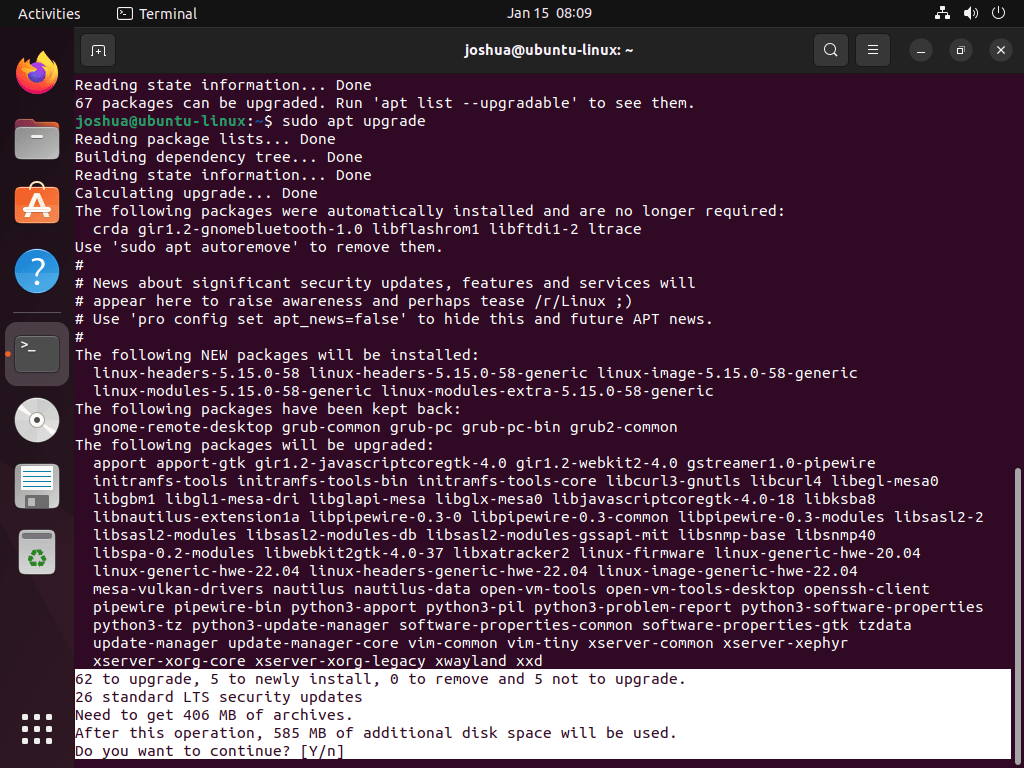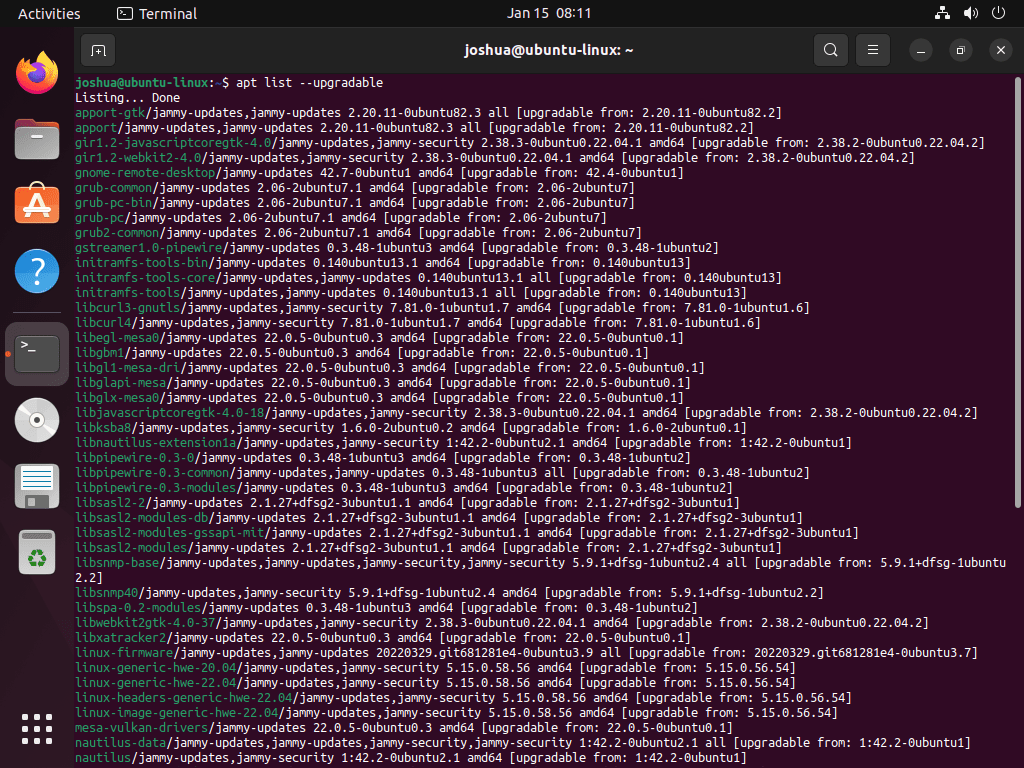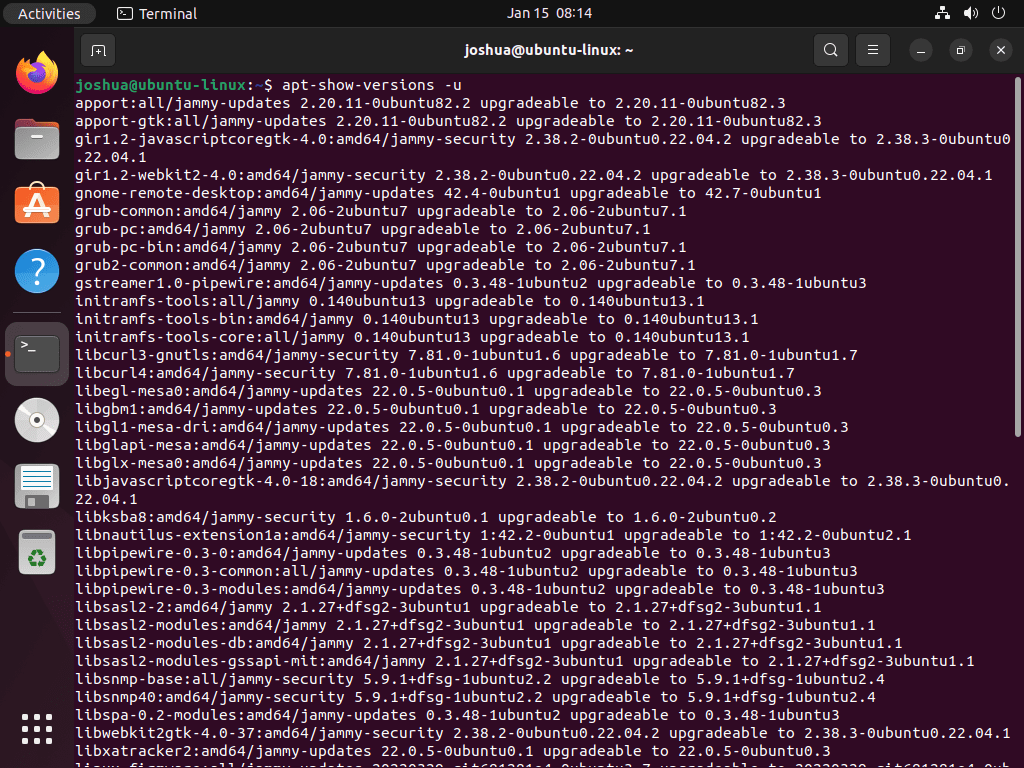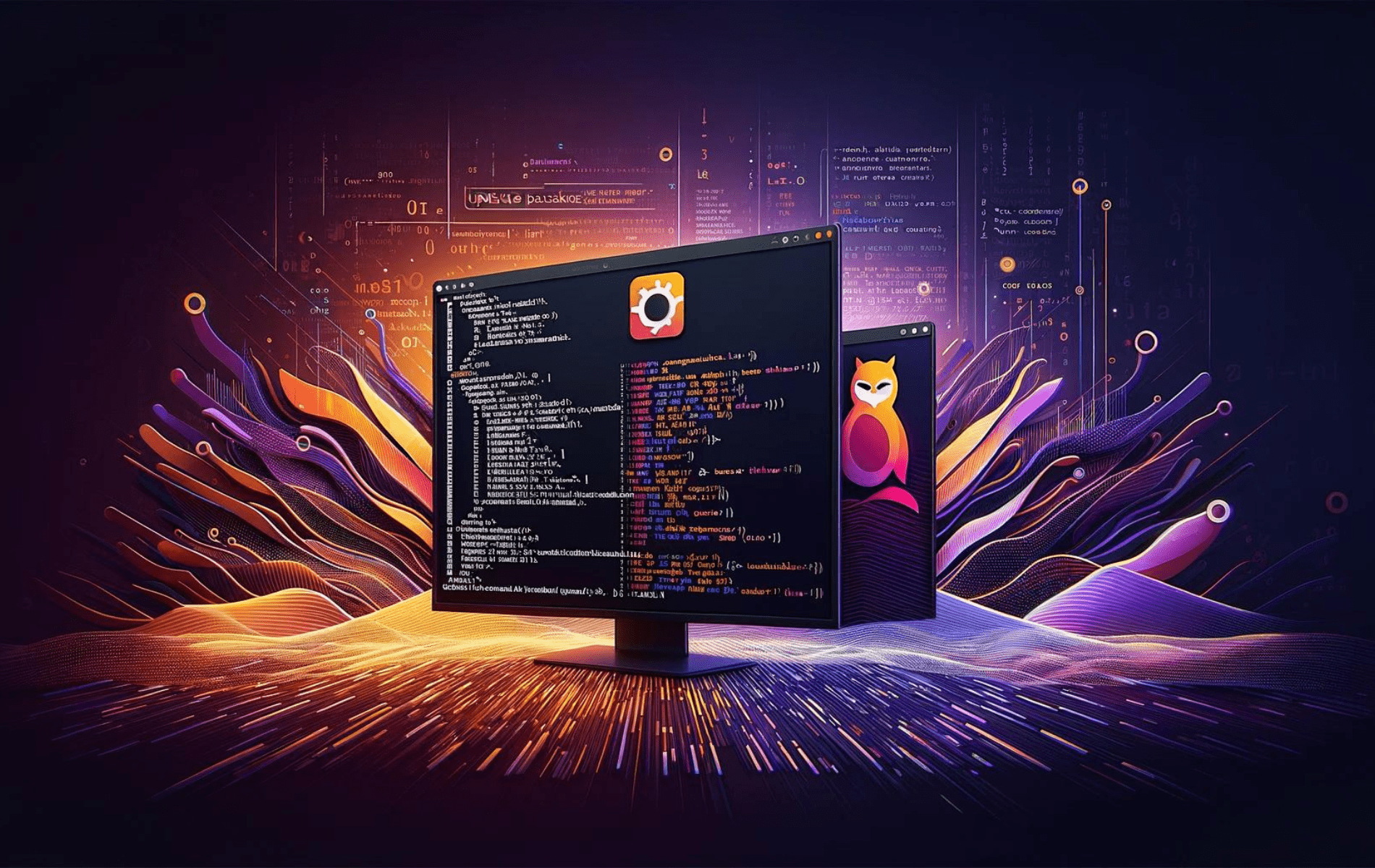Updating packages on your Ubuntu system is crucial for maintaining security, stability, and performance. Regular updates ensure your system has the latest features, security patches, and bug fixes. Using the command-line interface to update packages is a straightforward and efficient way to keep your system up-to-date.
This guide will explain why updating packages is important and demonstrate how to update packages using the Ubuntu command-line.
Check For Updates for Packages via Command-Line Terminal
Updating packages in Ubuntu is essential in maintaining your system’s security and efficiency. The terminal commands apt-get update and apt update are pivotal for this process, ensuring your system is informed about the latest updates.
Understanding apt-get vs. apt
The apt-get Command
The apt-get command is a traditional tool for package management in Debian and Ubuntu systems. It’s known for its robustness and extensive features. When you run apt-get update, it queries the software repositories and updates the local package index. This action doesn’t upgrade the installed packages but refreshes the list of available updates.
The apt Command
On the other hand, apt is a newer, more user-friendly command-line interface. It streamlines some of the most common package management tasks. The apt update command, similar to apt-get update, updates the list of available packages from the repositories. However, it offers improved progress reporting and a more modern output format.
Both commands are adequate for the initial step in the update process, but apt is generally recommended for its ease of use, especially for beginners.
Using apt-get
To check for updates, use the apt-get command:
sudo apt-get updateRemember, running this command sudo is necessary to grant administrative privileges for accessing package information.
Alternative: Using apt Update
For a more streamlined experience, use the apt update command:
sudo apt updateThis command is part of the apt package, offering a more user-friendly interface and output compared to apt-get.
Example output:

Upgrade Packages via Command-Line Terminal
Once you’ve updated your package lists in Ubuntu, the subsequent step is upgrading the packages. This process is crucial for applying your system’s latest patches, features, and security updates. You can accomplish this using either the apt-get or apt commands.
Using apt-get for Package Upgrades
To upgrade all available packages with apt-get, execute the following command:
sudo apt-get upgradeThis command requires administrative privileges, hence the use of sudo. It scans the list of packages for which updates are available and upgrades them to their latest versions. However, it does not remove any packages or install new ones not installed.
Alternative Method: Using apt for Upgrades
For a more modern approach, use the apt upgrade command:
sudo apt upgradeLike apt-get upgrade, this command upgrades all the packages to the newest available versions. apt provides a more user-friendly interface and is often preferred for its simplicity and improved output format.

This command upgrades all the packages that have updates available. It’s a good practice to run these commands regularly to ensure your system runs the latest and most stable software versions.
Performing Upgrades on Specific Ubuntu Packages
In Ubuntu, while general updates apply to all packages, there are instances where you might need to upgrade a specific package independently. This targeted approach is practical when you need immediate updates for particular software without affecting the rest of your system.
Upgrading a Specific Package Using apt-get
To upgrade an individual package using the apt-get method, use the following command structure:
sudo apt-get upgrade <package name>Replace <package name> with the actual name of the package you wish to upgrade. This command must be executed with sudo to gain administrative privileges. It will only upgrade the specified package, leaving others unchanged.
Alternative Method: Using apt for Specific Package Upgrades
For a more streamlined process, you can use the apt command:
sudo apt upgrade <package name>Again, replace <package name> with the name of the package you want to upgrade. apt offers a more user-friendly interface, and it is the preferred method for many users due to its simplicity and clarity in execution.
List Upgradeable Packages
Identifying packages eligible for upgrades in Ubuntu is a key aspect of system management. This process ensures that you know the available updates for your system’s software.
Displaying a List of Upgradeable Packages Using apt
Updating the Package List
Start by updating the package list to ensure you have the latest information from the repositories:
sudo apt updateThis command requires administrative privileges and fetches the latest package information.
Listing Upgradeable Packages
After updating the package list, you can display the list of packages ready for an upgrade:
sudo apt list --upgradableThis command outputs a list of all packages with new versions available in the repositories. It’s an effective way to quickly ascertain which packages on your system are due for an update.
Alternative: Non-sudo Method
Alternatively, you can list upgradeable packages without administrative privileges:
apt list --upgradableThis approach is helpful for users who may not have sudo access but still want to view available package updates.
Example output:

Using Graphical User Interface for Upgrades
For those who prefer a graphical approach, Ubuntu Software or other package manager GUIs offer an intuitive way to check for and apply package updates.
It is important to regularly check for upgradeable packages to ensure your system benefits from the latest features and security updates available.
Utilizing the apt-show-versions Command
The apt-show-versions command offers an alternative way to identify upgradeable packages in Ubuntu. This command is handy for getting detailed version information for each package.
Running apt-show-versions
To list all packages that are eligible for an upgrade, use:
apt-show-versions -uThis command outputs a list of all upgradeable packages and their current and available versions.
Example output:

Installing apt-show-versions
If the apt-show-versions command is not available on your system; it can be installed easily. To do this, run:
sudo apt install apt-show-versions -yThe -y flag automatically confirms the installation, streamlining the process. After installation, rerun the apt-show-versions -u command to list all upgradeable packages.
Using apt-show-versions lets you see which packages have updates available and gives you insight into the specific versions involved, aiding in more informed upgrade decisions.
Full-Upgrade or Dist-upgrade Command in Ubuntu
In Ubuntu, the apt-get dist-upgrade and apt full-upgrade commands are crucial for a comprehensive system update. These commands upgrade packages to the latest versions available in the repositories and manage complex changes, including new dependencies and removing obsolete packages.
Using apt-get dist-upgrade
To perform a full-upgrade with apt-get, start by updating the package list:
sudo apt-get updateThen, proceed with the dist-upgrade:
sudo apt-get dist-upgradeThis command upgrades the system by intelligently handling changes in package dependencies, ensuring a thorough and practical update.
Alternative: Using apt full-upgrade
For a more modern approach, use the apt full-upgrade command. First, update the package list:
sudo apt updateFollow this with the full-upgrade:
sudo apt full-upgradeLike dist-upgrade, full-upgrade deals with complex updates, including dependency changes, offering a robust solution for keeping your system current.
System Reboot Considerations
It is essential to note that executing these upgrade commands may necessitate a system reboot, especially if the kernel is upgraded. Regularly running these commands is recommended to maintain the latest and most stable software versions on your system.
Conclusion
Regularly updating packages on your Ubuntu system is essential for keeping it secure, stable, and efficient. By using the command-line interface, you can easily ensure that all software is current and running smoothly. Keep your system healthy and protected by making updates a regular part of your maintenance routine.

